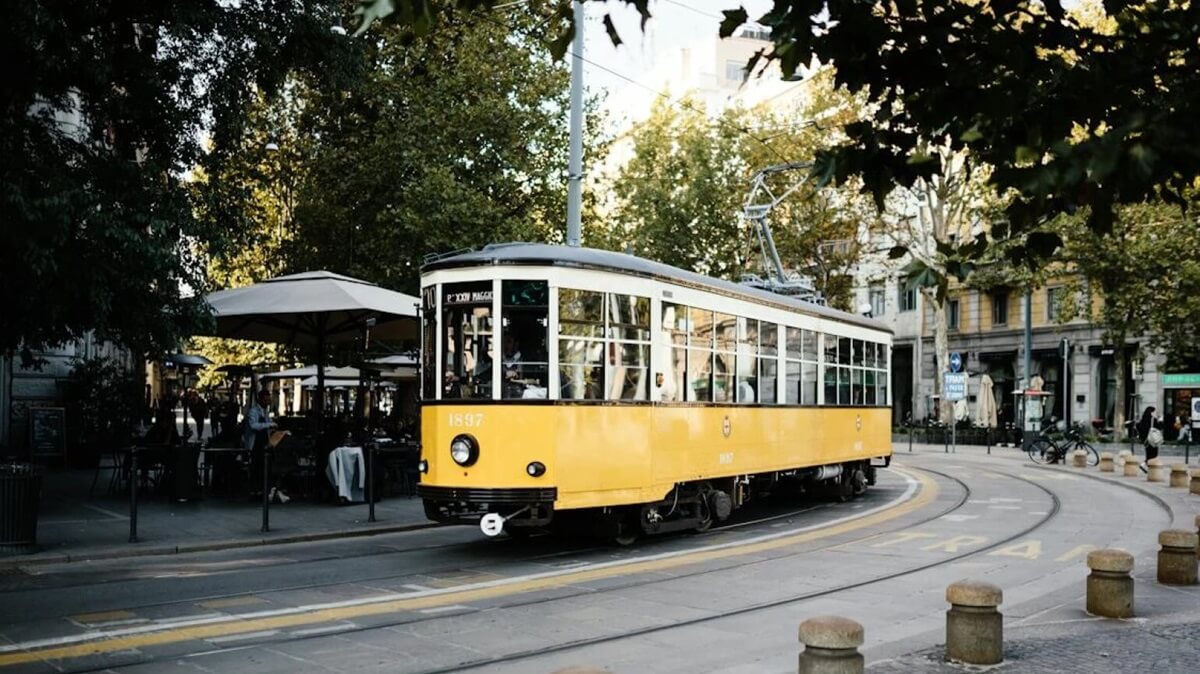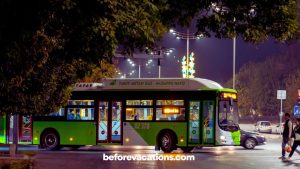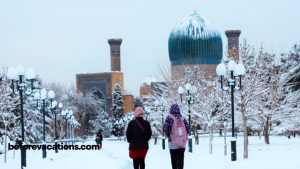Italy’s charm extends far beyond its iconic landmarks and world-renowned cuisine. It lies in the intricate network of connections that weave its cities, towns, and landscapes together.
Understanding local transportation in Italy is key to unlocking the full magic of your journey. Imagine effortlessly gliding through picturesque countryside on a high-speed train, navigating ancient city streets by tram, or zipping across Venetian canals on a vaporetto.
Italy offers a diverse and generally efficient public transport system, designed to get you where you need to go with ease, whether you’re a seasoned traveler or a first-time visitor. This comprehensive guide provides all the essential information on how to master local transit, ensuring your Italian adventure is smooth, authentic, and utterly unforgettable.
Why Understanding Local Transportation in Italy Matters
Effective navigation dramatically enhances your travel experience. Italy’s unique geography and urban planning, from its dense historic centers to its sprawling regional networks, make relying on public transit both practical and economical. Knowing your options empowers you to explore more deeply, reach hidden gems, and immerse yourself in local life. It also allows you to manage your budget effectively, as public transport is often far more cost-effective than taxis or private transfers.
Furthermore, familiarizing yourself with local transportation in Italy offers a glimpse into daily Italian life. You’ll observe commuters, students, and families going about their routines, providing a more authentic cultural experience than perpetually relying on private cars.
From high-speed national rail lines connecting major metropolises to charming local buses winding through hilltop villages, Italy’s transport systems are integral to its identity. This guide breaks down the essential modes of transport, offering practical advice to help you navigate confidently, from ticket validation to understanding common city systems.
Mainstays of Local Transportation in Italy: Trains and Buses
Trains and intercity buses form the backbone of Italy’s public transportation network, providing reliable and extensive coverage across the entire peninsula.
Trains: Connecting Italy’s Heart
Italy boasts an excellent and extensive railway system, which is often the most convenient and efficient way to travel between cities. It offers a comfortable and scenic alternative to driving.
- High-Speed Trains (Frecce & Italo): These modern, rapid trains connect Italy’s major cities like Rome, Florence, Milan, Naples, Venice, and Bologna. Operators include Trenitalia’s Frecciarossa, Frecciargento, and Frecciabianca services, as well as the private Italo train company. These trains are ideal for covering long distances quickly and comfortably. They offer various classes of service, from standard to executive, providing amenities like Wi-Fi and power outlets. Booking high-speed tickets in advance is highly recommended. This secures better prices and ensures availability, especially during peak seasons or for popular routes.
- Intercity and Regional Trains: Trenitalia also operates Intercity trains, which are slower than high-speed services but connect more cities and towns, offering a good balance of speed and coverage. Regional trains (Treno Regionale) are the slowest but most comprehensive. They serve almost every town, making them perfect for exploring smaller, charming destinations. These are often unreserved, so you can just buy a ticket and hop on. Regional trains provide a great way to experience local life and scenery, offering a more relaxed pace of travel.
Tips for Train Travel:
- Buying Tickets: Purchase tickets online (Trenitalia.com, ItaloTreno.it), at station ticket counters, or from self-service machines.
- Validation: For Regional trains, you MUST validate your ticket at one of the green/white machines on the platform before boarding. Failure to do so can result in hefty fines. High-speed and Intercity tickets with specific seat reservations usually do not require separate validation.
- Passes: Consider a Eurail Pass or Interrail Pass if you plan extensive train travel across Italy and beyond. For specific regions, some regional passes might be available.
Intercity Buses: Flexible Regional Connections
While trains cover major routes, intercity buses often reach towns and areas not served by rail. They offer flexibility and can be a cost-effective option for specific regional travel.
- Regional Bus Networks: Many regions have their own bus companies (e.g., SITA Sud for Campania, FlixBus for interregional). These buses connect smaller towns, coastal areas, and mountain villages. They are particularly useful for destinations like the Amalfi Coast or parts of Sicily where train access is limited.
- Long-Distance Bus Companies: Companies like FlixBus offer connections between major cities, often at very competitive prices, especially if booked in advance. They can be a good alternative to trains for budget travelers or routes not optimally covered by rail.
Tips for Bus Travel:
- Buying Tickets: Purchase tickets at bus stations, from authorized tabaccherie (tobacco shops), or often directly from the driver (though this might be more expensive or not always possible). For long-distance buses, online booking is standard.
- Schedules: Bus schedules can be less frequent on weekends or holidays, and may vary seasonally. Check timetables in advance.
- Comfort: Intercity buses are generally comfortable, with air conditioning on longer routes. They offer a good way to see the countryside.
Urban Navigation: Mastering City Transportation
Once you arrive in an Italian city, a variety of local transport options await to help you explore. Understanding these systems is essential for efficient sightseeing.
Metro Systems: Fast City Travel
Italy’s largest cities boast efficient metro systems, ideal for quickly covering long distances or bypassing traffic.
- Rome (Linea A, B, C): Connects major attractions like the Colosseum, Spanish Steps, and Vatican.
- Milan (5 lines): Extensive network, excellent for navigating the city center and reaching popular sites.
- Naples (2 lines): Connects the central station with key areas.
- Turin (1 line): A modern, automated metro system.
Tips for Metro Travel:
- Tickets: Purchase single-ride tickets, multi-ride tickets, or day passes from metro stations, newsstands (edicola), or tabaccherie.
- Validation: You must validate your ticket by inserting it into the turnstile reader before entering the platform.
- Hours: Metros typically operate from early morning until late evening/midnight.
City Buses and Trams: Extensive Coverage
Buses and trams provide comprehensive coverage within cities, reaching areas not served by the metro. They offer a great way to see the city as you travel.
- Extensive Networks: Almost all Italian cities have extensive bus networks. Trams are common in cities like Rome, Milan, Turin, Florence, and Naples.
- Flexibility: Buses and trams can navigate narrower streets and reach more residential areas. They are essential for many sightseeing routes.
- Traffic: Be aware that buses can be subject to traffic delays, especially during peak hours in large cities.
Tips for Bus/Tram Travel:
- Tickets: Purchase tickets beforehand from tabaccherie, newsstands, or automatic machines at major stops. You generally cannot buy tickets directly from the driver (or only with specific coins and limited availability).
- Validation: Crucially, you MUST validate your ticket inside the bus or tram immediately upon boarding. Look for a small machine, often yellow or orange. Failure to validate can lead to fines during inspections.
- Routes: Use Google Maps or local transport apps (e.g., Moovit) to find routes and real-time schedules.
Taxis and Ride-Sharing: Convenience at a Price
For convenience, especially with luggage or late at night, taxis and ride-sharing services are available.
- Taxis: Official taxis are white and have a “Taxi” sign on the roof. They use meters. Find them at designated taxi stands (common near stations, major squares, airports) or call a dispatch service. Hailing them on the street outside a stand is generally not permitted. Be wary of unofficial taxis.
- Ride-Sharing: Uber’s availability varies. In some Italian cities (e.g., Rome, Milan), Uber operates primarily through licensed taxi services (Uber Black, Lux), not the standard ride-sharing model. Check app availability and pricing in your specific city.
- Cost: Taxis and ride-sharing are significantly more expensive than public transport. They are best for convenience or group travel.
Unique Transportation: Mastering Venice’s Waterways
Venice, with its car-free historic center built on water, requires a unique approach to local transportation in Italy. Its canals are its roads.
Vaporetto (Water Bus): Venice’s Lifeline
The vaporetto is Venice’s public water bus system. It is the primary way to get around the Grand Canal, reach other islands, and navigate various parts of the city.
- Extensive Routes: Vaporetti operate on numerous lines, covering the Grand Canal, the Giudecca Canal, and connecting to islands like Murano, Burano, and Lido.
- Efficiency: They are generally efficient, though lines can be long at popular stops during peak tourist times.
- Views: Traveling by vaporetto offers fantastic views of Venetian palaces and daily life along the canals.
Tips for Vaporetto Travel:
- Tickets & Passes: Single tickets are expensive. If you plan to use them frequently, purchase a 1-day, 2-day, 3-day, or 7-day pass. These offer unlimited rides and provide significant savings.
- Validation: ALWAYS validate your ticket or pass by tapping it on the electronic reader at the entrance gate before boarding.
- Rush Hour: Vaporetti can get very crowded during rush hours or peak tourist periods. Be prepared for standing.
Gondolas and Water Taxis: Scenic and Private Options
While Vaporetti are public transport, gondolas and private water taxis offer more exclusive, though costlier, experiences.
- Gondolas: Primarily for romantic or scenic tours, not practical transportation for getting from point A to point B. Fares are fixed by the city.
- Private Water Taxis: These sleek motorboats offer direct, luxurious, and very fast transfers to many hotels with canal access. They are expensive but can be worth it for groups or for a grand arrival/departure.
Planning Your Italian Transport: Essential Advice
Effective planning for local transportation in Italy requires more than just knowing the types of transit. Consider these additional pieces of advice.
Understanding Tickets and Passes
- Integrated Tickets: Many cities offer integrated tickets that cover buses, trams, and metro lines within a certain time frame (e.g., 90 minutes, 24 hours). These are often more economical than single-ride tickets.
- Regional Passes: For some regions (e.g., Campania ArteCard for Naples/Amalfi Coast, Lazio Pass for Rome and its region), special passes may combine transport with museum entry, offering convenience and savings. Research these based on your itinerary.
- Where to Buy: Purchase tickets at tabaccherie, newsstands, metro stations, train stations, or sometimes from vending machines at bus stops.
Validation is Key
This cannot be stressed enough: Always validate your ticket! Whether it’s a bus, tram, metro, or regional train, failing to validate your ticket after purchase and before or immediately upon boarding can result in a significant fine (often 50-100 euros or more), even if you have a valid ticket in hand. Look for small machines (often yellow, green, or white) at platform entrances or inside vehicles.
Apps and Technology
- Google Maps: Excellent for navigating public transport in Italian cities. It provides real-time routes, schedules, and estimated travel times.
- Moovit: A popular app that offers real-time public transport information, directions, and alerts in many Italian cities.
- Official Transport Apps: Larger cities or regions may have their own official transport apps (e.g., ATAC for Rome, ATM for Milan) that provide detailed information and sometimes allow ticket purchases.
General Tips
- Peak Hours: Be aware that public transport can get very crowded during morning and evening rush hours, especially in major cities.
- Strikes (Sciopero): Public transport strikes (sciopero) can occur in Italy, though they are usually announced in advance. Check local news or transport company websites for updates if traveling during a potential strike period.
- Small Bills/Coins: Have small denominations or coins ready for ticket purchases from machines or smaller vendors.
- Validate Before Buying: In some smaller towns, you might buy a ticket from a bar or cafe, but you still need to validate it yourself upon boarding.
Your Seamless Italian Journey Awaits!
Mastering local transportation in Italy is more than just getting from point A to point B; it’s about embracing the Italian way of life and efficiently unlocking the country’s endless wonders. From the high-speed rail that whisks you between cultural capitals to the charming vaporetti navigating Venice’s intricate waterways, Italy’s transport systems are designed to make your exploration effortless and enjoyable.
By understanding your options, utilizing passes wisely, and always remembering to validate your tickets, you are well-equipped to experience Italy authentically and conveniently.
Ready to explore Italy like a local? Plan your routes and embark on an incredible journey through this magnificent country!











